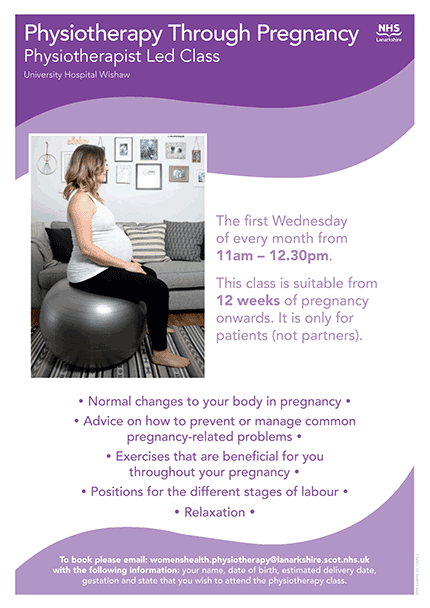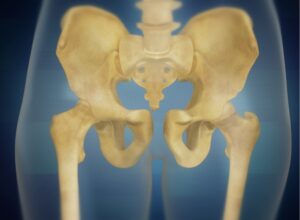Pregnancy related Pelvic Girdle Pain (PPGP)
What is Pregnancy related Pelvic Girdle Pain?
Pregnancy related Pelvic Girdle Pain can also be known as P-PGP or formally SPD.
PPGP can be very common in pregnancy with around one in three women experiencing symptoms at some point in their pregnancy.
PPGP describes any type of discomfort around your pelvis such as,
- Lower back
- Buttocks
- Pubic bone
- Groin
- Hips
- Thighs
What causes PPGP?
Your pelvis stays strong and robust during pregnancy but your nervous system (brain, spinal cord and nerves) can become over-sensitive. Common influencers that can cause a heightened or up-regulated nervous system include:
- previous physical, mental or pregnancy related trauma
- fatigue and sleeping difficulties
- vomiting/nausea
- relationships
- previous experiences of PPGP
- work related stresses
- lack of exercise
- relationships
- home and other child responsibilities
- fertility or conception assistance
- changes in your body
- fear of exercising
- finances

If you have pelvic girdle pain, it might be affecting how you are feeling emotionally. For example, feelings of frustration, irritability, guilt and upset at being unable to carry out normal activities and roles. It has also been shown that pelvic girdle pain affects a women’s sense of identity and ability to care for their children. These feelings can also impact relationships, for example with partners and children.
If your pain is causing you considerable distress, then you should let your GP or midwife know as you may need additional support.
Please see the NHS Silvercloud link to help with your mental health.
This heightened nervous system which can makes pain and discomfort worse, can in turn affect the way we move about our daily lives meaning that we adopt different movement patterns to compensate for this. Some activities that you may make you aware of your symptoms include:
- sitting
- walking
- getting in and out of the bed
- rolling in bed
- standing on one leg
- going up and down the stairs
How can I help my symptoms of PPGP?
There are lots of things that you can do to help your symptoms of PPGP.
Many women will significantly improve their symptoms if they understand the reasoning behind their pain and make some simple changes to their daily life.
Understand your pain
Have a look at this video which will help you to understand your pain:
Understand the anatomy of your pelvis and the changes in your body
Understand the anatomy of your pelvis and the changes in your body
Your body goes through many changes during the course of your pregnancy and it is important to appreciate this as you grow. Pregnancy hormones can soften some of the tissues around your pelvis in order to create room for your baby to grow and to prepare you for birth. This is completely normal and is in fact a very useful change and research has shown that this does not contribute to you developing symptoms of PPGP.
Your pelvis is made up of two main joints:
- Your pubic symphysis joint at the front
- Your sacroiliac joints at the back.
These joints are supported by ligaments, tendons and muscles which help to give the pelvis stability.
The base of your pelvis is supported by the pelvic floor muscles. These muscles connect from the bottom of your spine at your sacrum and tail bone to the front of your pelvis at the pubic bone.
Myth – ‘My pelvis is out of alignment’
Fact – Your pelvis DOES NOT move out of alignment in pregnancy. It stays strong and robust
The pelvic floor muscles support your:
- bladder
- womb
- bowel
- they provide strength and structure to your vaginal walls and pelvis.
- they help to control passing urine and opening your bowels.
Myth -‘My pelvis is unstable’
Fact – Your pelvis is made up of some of the strongest joints in your body and the muscles around about it help to keep it strong and stable.
Relaxation techniques
Your energy system is directly linked with your nervous system. If you are feeling tired this can often make our symptoms seem worse. Therefore, it is important that you listen to your body.

Top tips
- try to slow down as much as possible
- avoid having too much planned in one day
- avoid being on your feet for long periods
- take regular breaks if possible
- be kind to yourself
- prioritise sleep and rest
- arrange a meeting at work to complete your risk assessment and discuss modification of work duties
Taking some time out during your day to complete some relaxation or mindfulness can help desensitise your nervous system. Try to set aside some time for:
- Deep breathing exercises
- Visualisation, meditation and mindfulness
- Yoga
- Do something that you enjoy
- Meet with friends
- Spend time in nature or with your pet
Exercise in pregnancy
Current evidence shows us that regular exercise has a positive impact on both mother and baby in pregnancy and can also reduce symptoms of Pelvic Girdle Pain. The government recommends that you complete up to 150 minutes of moderate intensity exercise per week. This is described as activity that makes you breathe faster, while still being able to hold a conversation.
Do activities like:
- cardiovascular exercise to raise your heart rate for example walking or cycling
- strength and resistance training to strengthen your muscles
- mobility based exercise like Yoga or Pilates.

Women who have not been active before pregnancy should follow a gradual progression to exercise, starting with around 10 minutes of moderate intensity exercise and building up to the recommended 150 minutes. However, you may need to adapt activity as listening to your body is important.
Please see this NHS page for further support and advice about exercising in pregnancy.
You can view the Government Infographic on physical activity for pregnant women here.
Gym ball exercises are beneficial to improve symptoms of Pelvic Girdle Pain. These exercises are proven to reduce stiffness in the joints around your pelvis and are a safe, gentle way of exercising throughout your pregnancy.
 Please ensure to buy a gym ball which is an anti-burst type and is the correct size to match your height and weight:
Please ensure to buy a gym ball which is an anti-burst type and is the correct size to match your height and weight:
- height of 5ft to 5ft 2inches – use a 55cm gym ball
- height of 5ft 2inch – 5ft 6inch – use a 65cm gym ball
- height of 5ft 6inch – 6ft – use a 75cm gym ball
See a Gym ball exercises video below
If you are having a high risk pregnancy, or are not keeping well please discuss exercise with your obstetric team. We recommend if struggling with symptoms of PPGP you consider doing some:
- pregnancy Yoga or Pilates
- swimming
Both these type of exercises are low impact, calming and great for reducing sensitivity in your nervous system (the best way to reduce pain).
Pelvic floor muscle exercises
Pregnancy puts a lot of pressure on your pelvic floor muscles and it is normal for the pelvic floor muscles to stretch during pregnancy. Your muscles may be weaker and you may feel more pressure vaginally and around your pelvis, so it is very important to strengthen your pelvic floor muscles.
How do I strengthen my pelvic floor muscles?
Start these exercises lying on your back or side. Then progress to doing them in sitting or standing. Do not hold your breath when completing these exercises:
- Step 1: Tighten the muscles around your back passage as though you are holding in wind (without squeezing your buttocks)
- Step 2: At the same time as your back passage squeeze, zip forwards to lift the muscles around the opening to your vagina, think about stopping yourself from passing urine
- Exercise 1: Lift and squeeze your pelvic floor muscles quickly 10 times
- Exercise 2: Lift and squeeze your pelvic floor muscles for up to 10 seconds 10 times. Relax for 4 seconds between each squeeze
Try and complete these exercises three to four times every day.
An additional way of strengthening your pelvic floor muscles is by completing a pelvic floor lift before you do certain activities such as lifting, coughing or moving from a sit to a stand.
Watch NHS Highland’s pelvic floor exercises video below
Modify daily activities
Modify daily activities
To help manage your symptoms, it is important that you are as active as possible but you may need to make changes to some of your day-to-day activities that make your symptoms worse.
Plan your day and do activities like walking the dog or shopping when you feel you have the energy to complete the task.

Sleep
Try to get 8-10 hours’ sleep per over a 24-hour period – this helps to dampen down your nervous system. If you have a broken night sleep due to frequent visits to the toilet, try and nap throughout the day. It is important that you ask for help and accept it when it is offered. If you have young children at home, pregnancy can be challenging.
- Accept help with childcare and nursery/school drop offs/pick-ups.
- Delegate housework to others.
Other advice
- Sit down to get dressed/undressed
- avoid standing favouring one leg
- avoid sitting with your legs crossed or in a basket,
- try going up- and downstairs one step at a time using handrails for support.
- When getting in and out of the car keep both legs together or taking small steps round.
- If sitting for long periods of time, try and take regular break by standing up and sitting down in your chair every 20 minutes or changing to sit on your gym ball at frequent intervals.
Eating and Drinking
Ensure you are eating a healthy balanced diet in a routine each day. If you are struggling with nausea and vomiting – eat regular snacks throughout the day. It is important to keep hydrated in pregnancy so try to drink 1.5-2 litres of water per day.

Pain Relief
Pain relief
It is useful to explore other options to manage your pain. You might find applying heat or ice helpful but just remember not to put this directly on to your skin or near your bump. You may need to discuss pain medication with your GP if you have tried other things that have not worked for you.
You can also try some alternative techniques which might give you some short term relief:
- Massage therapy
- TENs machine
- Acupuncture
- relaxation techniques
- elbow crutches
- maternity support belt

If you are struggling with your mobility you may benefit from using elbow crutches. Please see our self-refer walking aid form.
The advice we have detailed above is an essential part of your treatment and can make a big difference to your symptoms if you practice it regularly. We encourage you to explore and put into practice the information and advice we have shared on this webpage.
We want to reassure you that 90% of women report that their symptoms of pelvic girdle pain significantly improve within the first 3 months’ of their baby being born.
How to refer
Referral to the Pelvic Health Obstetrics Physiotherapy Service can be done by your midwife or you can also refer yourself by completing this form and emailing to our secure email address womenshealth.physiotherapy@lanarkshire.scot.nhs.uk
If you require a paper copy of the self-referral form, please contact physiotherapy and return directly to the department, contact details are below.
If you wish to attend our Physiotherapy Through Pregnancy class please email your name, date of birth, expected delivery date and state that you wish to attend the class to womenshealth.physiotherapy@lanarkshire.scot.nhs.uk
About the Physiotherapy Through Pregnancy Class
Physiotherapy Through Pregnancy
Physiotherapist Led Class
University Hospital Wishaw

- The first Wednesday of every month from 11am – 12.30pm.
- This class is suitable from 12 weeks of pregnancy onwards. It is only for patients (not partners).
- Normal changes to your body in pregnancy
- Advice on how to prevent or manage common pregnancy-related problems
- Exercises that are beneficial for you throughout your pregnancy
- Positions for the different stages of labour
- Relaxation
To book
Please email womenshealth.physiotherapy@lanarkshire.scot.nhs.uk with the following information: your name, date of birth, estimated delivery date, gestation and state that you wish to attend the physiotherapy class.
For more information on email usage please see the NHS Lanarkshire policy on Email Acceptable Usage .
For more information about the use of your personal information, please see the NHS Lanarkshire Data Protection Notice .


